-
 The Dialogues of Luisa Sigea, Nicolas Chorier, translation by Isadore Liseux (Isadore Liseux, Paris, 1890, first edition, first English translation, printed by Ch. Unsinger) 8.75" X 5.75", 3 books bound in one, xx+87pp, 132pp, 98+2pp, 3/4 crimson morocco over red boards, 5 raised bands, gilt decorations and titles on spine, marbled endpapers, top edge gilt, others deckled. Excellent condition for age, very minor bumping on corners and top and bottom of spine. In six dialogues (I. The skirmish; II. Tribadicon; III. Fabric; IV. The duel; V. Pleasures; VI. Frolics and sports) Tullia, who is 26, initiates her 15 year old cousin, Ottavia, in the art of sexual pleasure. The first four dialogues, which are fairly short, focus on tribadism and defloration. The longer fifth and six dialogues introduce flagellation, contractual submission, group sex, and anal sex. Like many sexual fictions, The Dialogues of Luisa Sigea (originally written in latin "Aloisiae Sigeae Satyra Sotadica de arcanis Amoris et Veneris") attempts to conceal the identity of its author: it purports to be based on a Latin manuscript translation of a work written originally in Spanish in the sixteenth century by an erudite young woman, Luisa Sigea of Toledo and translated into latin by Jean Meursius of Holland. In fact, it was written c. 1660, in latin, by a Frenchman, Nicolas Chorier (1612-1692), a lawyer who wrote works on various historical and philosophical subjects. The first first French translation, L’Academie des dames, was issued in the 1680. This 1890 edition was for the first time translated into English by Isidore Liseux and issued as a 3 volume set. (1. I-IV, 2. V, 3. VI). Isidore Liseux (1835-1894) was a French bibliophile and publisher of erotica and curiosa. His publications were mostly rare texts of 16th to 18th century authors, hard to find and little known books which were usually translated and annotated by his friend and associate Alcide Bonneau or by Liseux himself. Liseux and Bonneau, both ex-priests, knew each other since seminary. His books were published in small numbers, on high quality paper, and with excellent typography. His usual printers were Claude Motteroz, Antoine Bécus, and later Charles Unsinger. Liseux's books were published openly as the climate was more permissive in Paris at the time. His books were so well regarded that pirates of his books and even unrelated books bearing his imprint with a false date were published clandestinely into the 20th century. French poet, Guillaume Apollinaire wrote: "The publications of Liseux are more and more sought after because they are correct, beautiful and rare." (Le flaneur des deux rives, 1918).
The Dialogues of Luisa Sigea, Nicolas Chorier, translation by Isadore Liseux (Isadore Liseux, Paris, 1890, first edition, first English translation, printed by Ch. Unsinger) 8.75" X 5.75", 3 books bound in one, xx+87pp, 132pp, 98+2pp, 3/4 crimson morocco over red boards, 5 raised bands, gilt decorations and titles on spine, marbled endpapers, top edge gilt, others deckled. Excellent condition for age, very minor bumping on corners and top and bottom of spine. In six dialogues (I. The skirmish; II. Tribadicon; III. Fabric; IV. The duel; V. Pleasures; VI. Frolics and sports) Tullia, who is 26, initiates her 15 year old cousin, Ottavia, in the art of sexual pleasure. The first four dialogues, which are fairly short, focus on tribadism and defloration. The longer fifth and six dialogues introduce flagellation, contractual submission, group sex, and anal sex. Like many sexual fictions, The Dialogues of Luisa Sigea (originally written in latin "Aloisiae Sigeae Satyra Sotadica de arcanis Amoris et Veneris") attempts to conceal the identity of its author: it purports to be based on a Latin manuscript translation of a work written originally in Spanish in the sixteenth century by an erudite young woman, Luisa Sigea of Toledo and translated into latin by Jean Meursius of Holland. In fact, it was written c. 1660, in latin, by a Frenchman, Nicolas Chorier (1612-1692), a lawyer who wrote works on various historical and philosophical subjects. The first first French translation, L’Academie des dames, was issued in the 1680. This 1890 edition was for the first time translated into English by Isidore Liseux and issued as a 3 volume set. (1. I-IV, 2. V, 3. VI). Isidore Liseux (1835-1894) was a French bibliophile and publisher of erotica and curiosa. His publications were mostly rare texts of 16th to 18th century authors, hard to find and little known books which were usually translated and annotated by his friend and associate Alcide Bonneau or by Liseux himself. Liseux and Bonneau, both ex-priests, knew each other since seminary. His books were published in small numbers, on high quality paper, and with excellent typography. His usual printers were Claude Motteroz, Antoine Bécus, and later Charles Unsinger. Liseux's books were published openly as the climate was more permissive in Paris at the time. His books were so well regarded that pirates of his books and even unrelated books bearing his imprint with a false date were published clandestinely into the 20th century. French poet, Guillaume Apollinaire wrote: "The publications of Liseux are more and more sought after because they are correct, beautiful and rare." (Le flaneur des deux rives, 1918). -
 Sappho: memoir, text, selected renderings, and a literal translation by Henry Thorton Wharton, Sappho, trans. Henry Thornton Wharton, M.A. Oxon. (John Lane [Bodley Head], London, A.C. McClurg & Co, Chicago, 1895 (third edition)) 7.25″ X 4.75″, xx 217pp + 16pp publisher’s list, hardbound, the third edition (this being the first to have its boards decorated by Aubrey Beardsley) green cloth boards with gilt decorations and titles on spine, bottom of the spine states “The Bodley Head and Chicago” reflecting the two publishing houses, top edge gilt, others deckled. Good condition for age, short tear on spine, binding and hinges good, newspaper article attached to back page “A Newly-Found Poem by Sappho” Sappho was a Greek lyric poet, born on the island of Lesbos. The Alexandrians included her in the list of nine lyric poets. Her birth was sometime between 630 and 612 BC, and it is said that she died around 570 BC, but little is known for certain about her life. The bulk of her poetry, which was well-known and greatly admired through much of antiquity, has been lost. But, her immense reputation has endured through surviving fragments. Sappho's poetry centers on passion and love for various people and both sexes. The word lesbian derives from the name of the island of her birth, Lesbos, while her name is also the origin of the word sapphic; neither word was applied to female homosexuality until the 19th century, after this translation by Wharton, the first English translation to acknowledge it. Originally John Lane and Elkin Mathews — The Bodley Head was a partnership set up in 1887 by John Lane (1854–1925) and Elkin Mathews (1851–1921), to trade in antiquarian books in London. It took its name from a bust of Sir Thomas Bodley, the eponymist of the Bodleian Library in Oxford, above the shop door. Lane and Mathews began in 1894 to publish works of ‘stylish decadence’, including the notorious literary periodical The Yellow Book. A. C. McClurg was a Chicago, Illinois based publisher made famous by their original publishing of the Tarzan of the Apes novels and other stories of Edgar Rice Burroughs.
Sappho: memoir, text, selected renderings, and a literal translation by Henry Thorton Wharton, Sappho, trans. Henry Thornton Wharton, M.A. Oxon. (John Lane [Bodley Head], London, A.C. McClurg & Co, Chicago, 1895 (third edition)) 7.25″ X 4.75″, xx 217pp + 16pp publisher’s list, hardbound, the third edition (this being the first to have its boards decorated by Aubrey Beardsley) green cloth boards with gilt decorations and titles on spine, bottom of the spine states “The Bodley Head and Chicago” reflecting the two publishing houses, top edge gilt, others deckled. Good condition for age, short tear on spine, binding and hinges good, newspaper article attached to back page “A Newly-Found Poem by Sappho” Sappho was a Greek lyric poet, born on the island of Lesbos. The Alexandrians included her in the list of nine lyric poets. Her birth was sometime between 630 and 612 BC, and it is said that she died around 570 BC, but little is known for certain about her life. The bulk of her poetry, which was well-known and greatly admired through much of antiquity, has been lost. But, her immense reputation has endured through surviving fragments. Sappho's poetry centers on passion and love for various people and both sexes. The word lesbian derives from the name of the island of her birth, Lesbos, while her name is also the origin of the word sapphic; neither word was applied to female homosexuality until the 19th century, after this translation by Wharton, the first English translation to acknowledge it. Originally John Lane and Elkin Mathews — The Bodley Head was a partnership set up in 1887 by John Lane (1854–1925) and Elkin Mathews (1851–1921), to trade in antiquarian books in London. It took its name from a bust of Sir Thomas Bodley, the eponymist of the Bodleian Library in Oxford, above the shop door. Lane and Mathews began in 1894 to publish works of ‘stylish decadence’, including the notorious literary periodical The Yellow Book. A. C. McClurg was a Chicago, Illinois based publisher made famous by their original publishing of the Tarzan of the Apes novels and other stories of Edgar Rice Burroughs. -

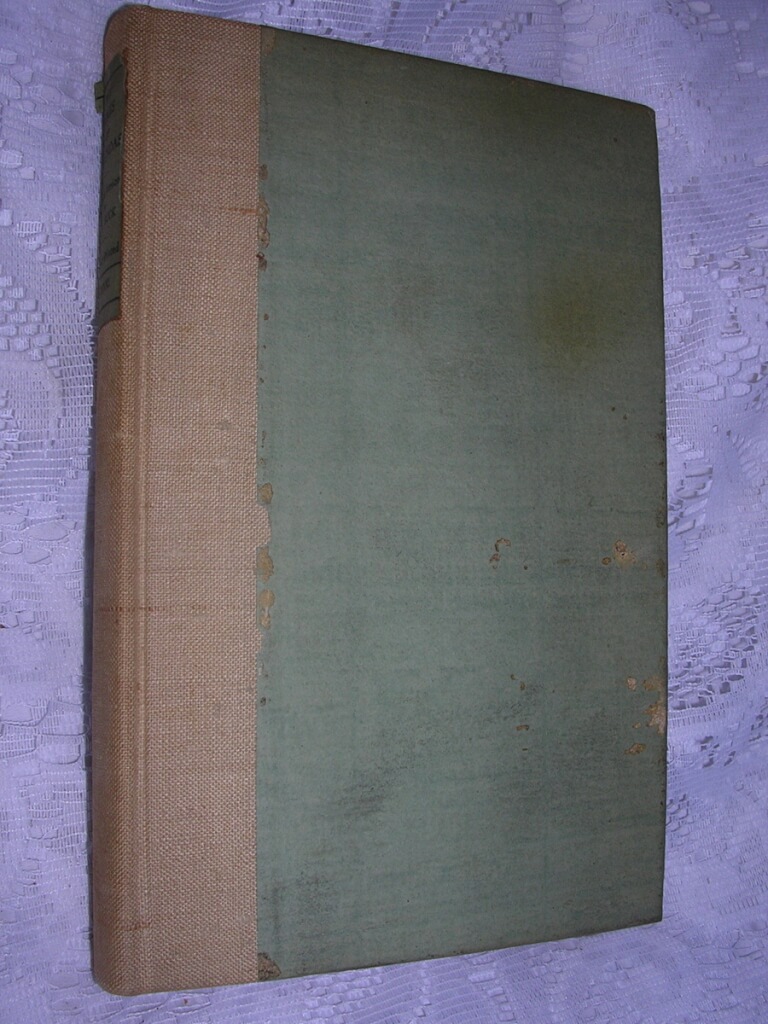 The Mimes of Herondas, trans. M. S. Buck (Privately Printed for Subscribers, New York, 1921, #919/975) 7" X 4 5/8", 119pp, hardbound no DJ, paper boards with beige cloth spine, top edge gilt, others deckle, good condition, lightly soiled Herodas was a Greek poet and the author of short humorous dramatic scenes in verse, written under the Alexandrian empire in the 3rd century BC. Mimes were scenes in popular life in South Italy and Sicily, written in the language of the people, vigorous with racy proverbs such as we get in other reflections of that region. The Mimes of Herodas have been known to us only since the discovery and publication of the "Kenyon", M. S. Buck, by the British Museum in 1891 (from a parchment containing 7 legible mimes half of the 8th and a fragment of the 9th).
The Mimes of Herondas, trans. M. S. Buck (Privately Printed for Subscribers, New York, 1921, #919/975) 7" X 4 5/8", 119pp, hardbound no DJ, paper boards with beige cloth spine, top edge gilt, others deckle, good condition, lightly soiled Herodas was a Greek poet and the author of short humorous dramatic scenes in verse, written under the Alexandrian empire in the 3rd century BC. Mimes were scenes in popular life in South Italy and Sicily, written in the language of the people, vigorous with racy proverbs such as we get in other reflections of that region. The Mimes of Herodas have been known to us only since the discovery and publication of the "Kenyon", M. S. Buck, by the British Museum in 1891 (from a parchment containing 7 legible mimes half of the 8th and a fragment of the 9th). -
 The Golden Ass of Apuleius, Lucius Apuleius Madaurensis (124-170 AD), trans. & intro Francis D. Byrne (The Imperial Press[Charles Carrington?], London, n.d. [1904?], #257/650) 7.75" X 5.75", xlix+388pp., 1/4 maroon morrocco over marbled boards with gilt titles and 4 raised bands on spine, top edge gilt The Metamorphoses of Apuleius, which St. Augustine referred to as “The Golden Ass”, is the only Ancient Roman novel in Latin to survive in its entirety. The plot Lucius and his curiosity and insatiable desire to see and practice magic. While trying to perform a spell to transform into a bird, he is accidentally transformed into an ass. This leads to a long journey, literal and metaphorical, filled with in-set tales. He finally finds salvation through the intervention of the goddess Isis, whose cult he joins. The date of the original work is uncertain. Scholars are not sure if he wrote it in his youth or at the end of his life. He adapted the story from a Greek story written by Lucius of Patrae, however his original Greek text has long been lost.
The Golden Ass of Apuleius, Lucius Apuleius Madaurensis (124-170 AD), trans. & intro Francis D. Byrne (The Imperial Press[Charles Carrington?], London, n.d. [1904?], #257/650) 7.75" X 5.75", xlix+388pp., 1/4 maroon morrocco over marbled boards with gilt titles and 4 raised bands on spine, top edge gilt The Metamorphoses of Apuleius, which St. Augustine referred to as “The Golden Ass”, is the only Ancient Roman novel in Latin to survive in its entirety. The plot Lucius and his curiosity and insatiable desire to see and practice magic. While trying to perform a spell to transform into a bird, he is accidentally transformed into an ass. This leads to a long journey, literal and metaphorical, filled with in-set tales. He finally finds salvation through the intervention of the goddess Isis, whose cult he joins. The date of the original work is uncertain. Scholars are not sure if he wrote it in his youth or at the end of his life. He adapted the story from a Greek story written by Lucius of Patrae, however his original Greek text has long been lost. -
 The Rahnghild Edition of: Venus in Furs, Leopold von Sacher-Masoch, illustrated by Rahnghild [Susan Inez Aguerra?] (William Faro, Inc [Samuel Roth, New York], 1932) 6.5"x9.25", 240pp, brown cloth boards with pasted title on spine, some soiling on front paste-down but overall a clean copy, beautiful art-deco illustrations throughout. Venus in Furs (German: Venus im Pelz) is a novella by Leopold Ritter von Sacher-Masoch (1836-1895), an Austrian writer and journalist. It is now his best known work and because of its themes the term masochism is derived from his name, coined by the Austrian psychiatrist, Krafft-Ebing. The novel was to be part of an epic series that Sacher-Masoch envisioned called Legacy of Cain. Venus in Furs was part of Love, the first volume of the series. It was published in 1870. The novel draws themes, like female dominance and sadomasochism, and character inspiration heavily from Sacher-Masoch’s own life. Wanda von Dunajew, the novel’s central female character, was modelled after his mistress Baroness Fanny Pistor. In December 1869 the two signed a contract making him her slave for a period of 6 months. In 1873, after the publication of Venus in Furs, Sacher-Masoch married Aurora von Rümelin who he pressured to continue the lifestyle he wrote about in his book. After 10 years they divorced. Rümelin, using the pseudonym of the books title character, “Wanda von Dunajew”, wrote Meine Lebensbeichte (My Life Confession) published in 1906. It detailed Sacher-Masoch’s private life and her relationship with him. During his lifetime, Sacher-Masoch was well known as a man of letters, a utopian thinker who espoused socialist and humanist ideals in his fiction and non-fiction. Most of his works remain untranslated into English. Until recently, his novel Venus in Furs was his only book commonly available in English. Samuel Roth (1893-1974) was an infamous American publisher and writer. He had a bookstore, Poetry Shop in the West Village section of Greenwich Villiage. He was the plaintiff in Roth v. United States (1957), which was a key Supreme Court ruling on freedom of sexual expression. He was also repeatedly convicted for publishing and distributing obscene material.
The Rahnghild Edition of: Venus in Furs, Leopold von Sacher-Masoch, illustrated by Rahnghild [Susan Inez Aguerra?] (William Faro, Inc [Samuel Roth, New York], 1932) 6.5"x9.25", 240pp, brown cloth boards with pasted title on spine, some soiling on front paste-down but overall a clean copy, beautiful art-deco illustrations throughout. Venus in Furs (German: Venus im Pelz) is a novella by Leopold Ritter von Sacher-Masoch (1836-1895), an Austrian writer and journalist. It is now his best known work and because of its themes the term masochism is derived from his name, coined by the Austrian psychiatrist, Krafft-Ebing. The novel was to be part of an epic series that Sacher-Masoch envisioned called Legacy of Cain. Venus in Furs was part of Love, the first volume of the series. It was published in 1870. The novel draws themes, like female dominance and sadomasochism, and character inspiration heavily from Sacher-Masoch’s own life. Wanda von Dunajew, the novel’s central female character, was modelled after his mistress Baroness Fanny Pistor. In December 1869 the two signed a contract making him her slave for a period of 6 months. In 1873, after the publication of Venus in Furs, Sacher-Masoch married Aurora von Rümelin who he pressured to continue the lifestyle he wrote about in his book. After 10 years they divorced. Rümelin, using the pseudonym of the books title character, “Wanda von Dunajew”, wrote Meine Lebensbeichte (My Life Confession) published in 1906. It detailed Sacher-Masoch’s private life and her relationship with him. During his lifetime, Sacher-Masoch was well known as a man of letters, a utopian thinker who espoused socialist and humanist ideals in his fiction and non-fiction. Most of his works remain untranslated into English. Until recently, his novel Venus in Furs was his only book commonly available in English. Samuel Roth (1893-1974) was an infamous American publisher and writer. He had a bookstore, Poetry Shop in the West Village section of Greenwich Villiage. He was the plaintiff in Roth v. United States (1957), which was a key Supreme Court ruling on freedom of sexual expression. He was also repeatedly convicted for publishing and distributing obscene material. -

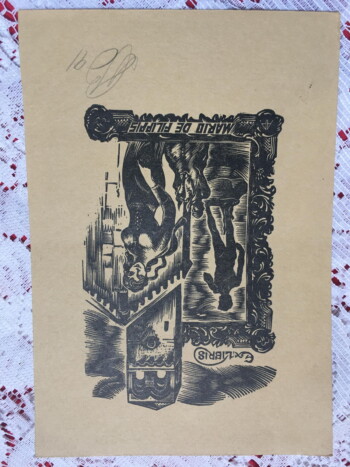 Ex Libris Mario de Filippis (signed) 5 x 4", signed on the front and back in pencil, presumably by artist Woman, man on horseback in front of Italian architecture and a silhouette of Michelangelo's David One of the most important (and largest) collections of ex libris in the world belongs to Mario De Filippis, the owner of Buca di San Francesco restaurant in Arezzo Italy. He has over 130,000 ex libris in his collection, approximately 13,000 are personal ex libris plates he's commissioned from artists all over the world using a multitude of printing techniques. His website describes Mario as "a passionate lover of small graphics".
Ex Libris Mario de Filippis (signed) 5 x 4", signed on the front and back in pencil, presumably by artist Woman, man on horseback in front of Italian architecture and a silhouette of Michelangelo's David One of the most important (and largest) collections of ex libris in the world belongs to Mario De Filippis, the owner of Buca di San Francesco restaurant in Arezzo Italy. He has over 130,000 ex libris in his collection, approximately 13,000 are personal ex libris plates he's commissioned from artists all over the world using a multitude of printing techniques. His website describes Mario as "a passionate lover of small graphics". -

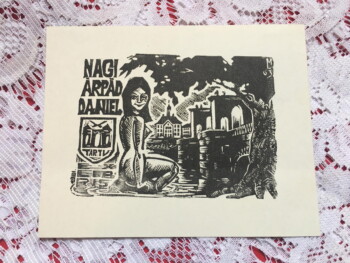 Ex Libris Nagi Arpad Daniel - Tartu 3.5 x 4.75", signed on the back, presumably by and for the Estonian artist, Arpad Daniel Nagy, Tartu is a city in Estonia nude woman sitting on rock in the water, behind her a bridge. Arpad Daniel Nagy was a creative visual artist. Arpad Daniel Nagy was born in 1922 and died in 1985. Arpad Daniel Nagy was largely inspired by the 1930s growing up. The period of the 1930s is characterised by the conflict between a number of political ideologies, including Marxist Socialism, Capitalist Democracy, and the Totalitarianism of both Communism and Fascism. Artistic output in the United States was heavily impacted at the time by the Great Depression, and a number of artists took to focusing on ideas of humility and the ordinary man. For the first time in US history, artists began to explore into political subjects and attempted to use their art to impact society. Themes such as poverty, lack of affordable housing, anti-lynching, anti-fascism, and workers' strikes were prevalent in many artists’ work. In the Soviet Union, Stalin’s government required urgent funds to implement the rapid industrialisation demanded by the first Five Year Plan. It initiated a secret plan to sell off treasures from the State Hermitage Museum in Leningrad (St. Petersburg), including a primary list of two hundred and fifty rare paintings by the Old Masters, many which found their way to the collection of Andrew Mellon via the New York based art dealing company, Knoedler. Surrealism continued to dominate in Europe, and had influence on an international scale. Artists such as Frida Kahlo and Diego Riviera in Mexico, worked to incorporate the ideas posed by Surrealism into their radical political ideologies, developing a new kind of magic realism. The decade took a ominous turn with the birth of National Socialism in Germany, followed by Adolf Hitler’s rise to power in 1933. By the end of the 1930s, the Second World War had begun; which preoccupied both artists and the global population.
Ex Libris Nagi Arpad Daniel - Tartu 3.5 x 4.75", signed on the back, presumably by and for the Estonian artist, Arpad Daniel Nagy, Tartu is a city in Estonia nude woman sitting on rock in the water, behind her a bridge. Arpad Daniel Nagy was a creative visual artist. Arpad Daniel Nagy was born in 1922 and died in 1985. Arpad Daniel Nagy was largely inspired by the 1930s growing up. The period of the 1930s is characterised by the conflict between a number of political ideologies, including Marxist Socialism, Capitalist Democracy, and the Totalitarianism of both Communism and Fascism. Artistic output in the United States was heavily impacted at the time by the Great Depression, and a number of artists took to focusing on ideas of humility and the ordinary man. For the first time in US history, artists began to explore into political subjects and attempted to use their art to impact society. Themes such as poverty, lack of affordable housing, anti-lynching, anti-fascism, and workers' strikes were prevalent in many artists’ work. In the Soviet Union, Stalin’s government required urgent funds to implement the rapid industrialisation demanded by the first Five Year Plan. It initiated a secret plan to sell off treasures from the State Hermitage Museum in Leningrad (St. Petersburg), including a primary list of two hundred and fifty rare paintings by the Old Masters, many which found their way to the collection of Andrew Mellon via the New York based art dealing company, Knoedler. Surrealism continued to dominate in Europe, and had influence on an international scale. Artists such as Frida Kahlo and Diego Riviera in Mexico, worked to incorporate the ideas posed by Surrealism into their radical political ideologies, developing a new kind of magic realism. The decade took a ominous turn with the birth of National Socialism in Germany, followed by Adolf Hitler’s rise to power in 1933. By the end of the 1930s, the Second World War had begun; which preoccupied both artists and the global population. -
Out of stock
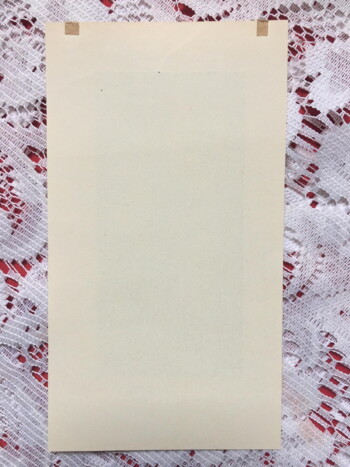
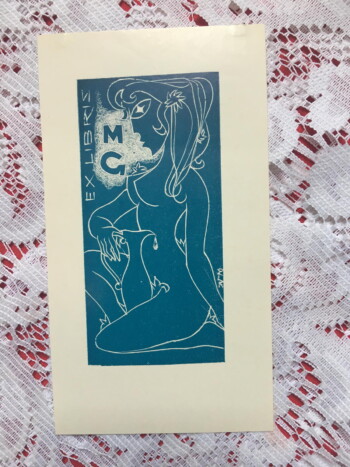 Ex Libris MG 2.75 x 5", unknown origin naked women with pitcher
Ex Libris MG 2.75 x 5", unknown origin naked women with pitcher -

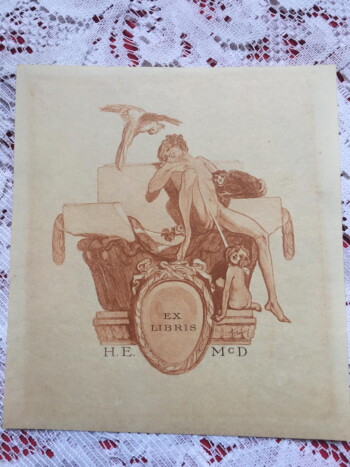 Ex Libris H.E. McD, by Franz von Bayros 4 x 4.5" red ink, previously pasted as evident by top part of back naked girl, animals, and child, presumably Ex libris for Horace E. McDonald Franz von Bayros (1866 – 1924) was an Austrian commercial artist, illustrator, and painter, now he is best known for his erotic work. He belonged to the Decadent movement in art, often utilizing erotic themes and phantasmagoric imagery. At the age 17, Bayros passed the entrance exam for the Vienna Academy with Eduard von Engerth. Bayros mixed in elegant society and soon belonged to the circle of friends of Johann Straub, whose step daughter Alice he married on 1896. The next year, Bayros moved to Munich. In 1904, Bayros gave his first exhibition in Munich, which was a great success. From 1904 until 1908, Bayros traveled to Paris and Italy for his studies. Typically, for an artist dealing with such imagery, von Bayros produced work under several pseudonyms, most notably Choisy Le Conin, and was hounded by authorities for much of his life for his “indecent” art often very imaginative, and including such taboo subjects as sadomasochism and bestiality. He became equally well-known for his masterly drawn figures of elegant modestly nude and non-nude women.
Ex Libris H.E. McD, by Franz von Bayros 4 x 4.5" red ink, previously pasted as evident by top part of back naked girl, animals, and child, presumably Ex libris for Horace E. McDonald Franz von Bayros (1866 – 1924) was an Austrian commercial artist, illustrator, and painter, now he is best known for his erotic work. He belonged to the Decadent movement in art, often utilizing erotic themes and phantasmagoric imagery. At the age 17, Bayros passed the entrance exam for the Vienna Academy with Eduard von Engerth. Bayros mixed in elegant society and soon belonged to the circle of friends of Johann Straub, whose step daughter Alice he married on 1896. The next year, Bayros moved to Munich. In 1904, Bayros gave his first exhibition in Munich, which was a great success. From 1904 until 1908, Bayros traveled to Paris and Italy for his studies. Typically, for an artist dealing with such imagery, von Bayros produced work under several pseudonyms, most notably Choisy Le Conin, and was hounded by authorities for much of his life for his “indecent” art often very imaginative, and including such taboo subjects as sadomasochism and bestiality. He became equally well-known for his masterly drawn figures of elegant modestly nude and non-nude women. -
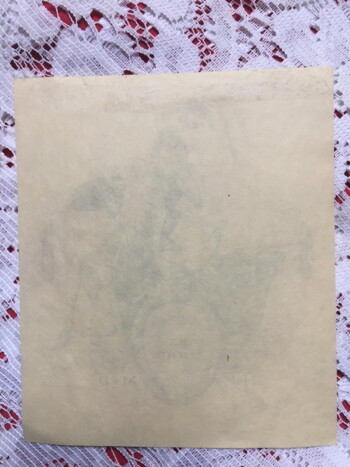
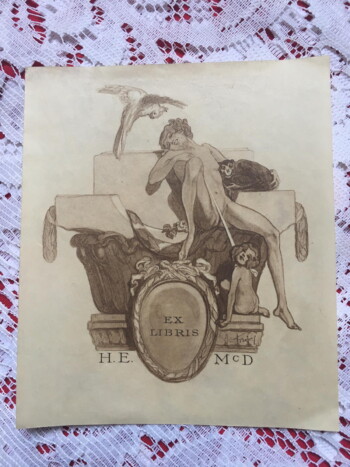 Ex Libris H.E. McD, by Franz von Bayros 4 x 4.5" brown/black ink, previously pasted as evident by top part of back naked girl, animals, and child, presumably Ex libris for Horace E. McDonald Franz von Bayros (1866 – 1924) was an Austrian commercial artist, illustrator, and painter, now he is best known for his erotic work. He belonged to the Decadent movement in art, often utilizing erotic themes and phantasmagoric imagery. At the age 17, Bayros passed the entrance exam for the Vienna Academy with Eduard von Engerth. Bayros mixed in elegant society and soon belonged to the circle of friends of Johann Straub, whose step daughter Alice he married on 1896. The next year, Bayros moved to Munich. In 1904, Bayros gave his first exhibition in Munich, which was a great success. From 1904 until 1908, Bayros traveled to Paris and Italy for his studies. Typically, for an artist dealing with such imagery, von Bayros produced work under several pseudonyms, most notably Choisy Le Conin, and was hounded by authorities for much of his life for his “indecent” art often very imaginative, and including such taboo subjects as sadomasochism and bestiality. He became equally well-known for his masterly drawn figures of elegant modestly nude and non-nude women.
Ex Libris H.E. McD, by Franz von Bayros 4 x 4.5" brown/black ink, previously pasted as evident by top part of back naked girl, animals, and child, presumably Ex libris for Horace E. McDonald Franz von Bayros (1866 – 1924) was an Austrian commercial artist, illustrator, and painter, now he is best known for his erotic work. He belonged to the Decadent movement in art, often utilizing erotic themes and phantasmagoric imagery. At the age 17, Bayros passed the entrance exam for the Vienna Academy with Eduard von Engerth. Bayros mixed in elegant society and soon belonged to the circle of friends of Johann Straub, whose step daughter Alice he married on 1896. The next year, Bayros moved to Munich. In 1904, Bayros gave his first exhibition in Munich, which was a great success. From 1904 until 1908, Bayros traveled to Paris and Italy for his studies. Typically, for an artist dealing with such imagery, von Bayros produced work under several pseudonyms, most notably Choisy Le Conin, and was hounded by authorities for much of his life for his “indecent” art often very imaginative, and including such taboo subjects as sadomasochism and bestiality. He became equally well-known for his masterly drawn figures of elegant modestly nude and non-nude women. -
 Die Weiberherrschaft in der Geschichte der Menschheit [The Rule of Women in the History of Mankind], Eduard Fuchs, Alfred Kind (Albert Langen, München, 1913) 8.75″ X 11″, complete set, 2 volumes plus supplementary volume, x+1-348pp, 349-711pp, ix+319pp, decorated green cloth boards, decorated cloth endpapers, binding loose by design and very much intact on all volumes (binding is often a problem with this edition), Vol. 1&2 contain 665 illustrations and 90 tipped in illustrations. The supplemental volume contains 317 illustrations and 34 tipped in illustrations. Minor bumping on covers, in excellent condition for age. Compiling 665+317 reproductions of drawings, prints and paintings from the collection of Eduard Fuchs, this edition shows how the image of female domination and male submission was widespread in Europe from the Renaissance to the early 20th century. Edward Fuchs (1870-1940). Fuchs' father was a shopkeeper. Early in his life, the younger Fuchs developed socialist and Marxist political convictions. In 1886, he joined the outlawed political party Sozialistische Arbeiterpartei (the precursor of the modern SPD, Sozialdemokratische Partei Deutschlands). Fuchs received a doctor of law degree and practiced as an attorney. In 1892, he became editor-in-chief of the satiric weekly Süddeutscher Postillon and later co-editor of the Leipziger Volkszeitung. His inflammatory articles in newspapers—one accusing the Kaiser of being a mass murderer—resulted in periodic jail sentences. During his periods of confinement, Fuchs wrote various social histories utilizing images as one of his primary sources. The first of these was his Karikatur der europäischen Völker (Caricatures of European Peoples), 1902. He moved to Berlin that same year where he edited the socialist newspaper Vorwärts. The following year he began his magnum opus, an examination of moral practice, Sittengeschichte, eventually running to six volumes by 1912. While engaged in this series, he followed up his interest in caricatures with one devoted to the representation of women, Die Frau in der Karikatur, 1905 (3 vols). Another book documenting the stereotypical representations of Jews appeared in 1912. Fuchs traveled with the artist Max Slevogt to Egypt in 1914, shortly before the outbreak of World War I. He was a pacifist during the War. Lenin's government put him in charge of prisoner exchange with Germany after the war; he was among the leaders of the German Comintern in Berlin in 1919. His interest in societal concerns in caricature led to a research interest in Daumier. Beginning in 1920, Fuchs published a catalogue raisonné on the artist in three volumes. He resigned from the party in 1929, following the expulsion of several stalwarts. At Hitler's ascension to power in Germany in 1933, Fuchs moved to France.
Die Weiberherrschaft in der Geschichte der Menschheit [The Rule of Women in the History of Mankind], Eduard Fuchs, Alfred Kind (Albert Langen, München, 1913) 8.75″ X 11″, complete set, 2 volumes plus supplementary volume, x+1-348pp, 349-711pp, ix+319pp, decorated green cloth boards, decorated cloth endpapers, binding loose by design and very much intact on all volumes (binding is often a problem with this edition), Vol. 1&2 contain 665 illustrations and 90 tipped in illustrations. The supplemental volume contains 317 illustrations and 34 tipped in illustrations. Minor bumping on covers, in excellent condition for age. Compiling 665+317 reproductions of drawings, prints and paintings from the collection of Eduard Fuchs, this edition shows how the image of female domination and male submission was widespread in Europe from the Renaissance to the early 20th century. Edward Fuchs (1870-1940). Fuchs' father was a shopkeeper. Early in his life, the younger Fuchs developed socialist and Marxist political convictions. In 1886, he joined the outlawed political party Sozialistische Arbeiterpartei (the precursor of the modern SPD, Sozialdemokratische Partei Deutschlands). Fuchs received a doctor of law degree and practiced as an attorney. In 1892, he became editor-in-chief of the satiric weekly Süddeutscher Postillon and later co-editor of the Leipziger Volkszeitung. His inflammatory articles in newspapers—one accusing the Kaiser of being a mass murderer—resulted in periodic jail sentences. During his periods of confinement, Fuchs wrote various social histories utilizing images as one of his primary sources. The first of these was his Karikatur der europäischen Völker (Caricatures of European Peoples), 1902. He moved to Berlin that same year where he edited the socialist newspaper Vorwärts. The following year he began his magnum opus, an examination of moral practice, Sittengeschichte, eventually running to six volumes by 1912. While engaged in this series, he followed up his interest in caricatures with one devoted to the representation of women, Die Frau in der Karikatur, 1905 (3 vols). Another book documenting the stereotypical representations of Jews appeared in 1912. Fuchs traveled with the artist Max Slevogt to Egypt in 1914, shortly before the outbreak of World War I. He was a pacifist during the War. Lenin's government put him in charge of prisoner exchange with Germany after the war; he was among the leaders of the German Comintern in Berlin in 1919. His interest in societal concerns in caricature led to a research interest in Daumier. Beginning in 1920, Fuchs published a catalogue raisonné on the artist in three volumes. He resigned from the party in 1929, following the expulsion of several stalwarts. At Hitler's ascension to power in Germany in 1933, Fuchs moved to France. -
 The Lysistrata of Aristophanes | Wholly translated into English and illustrated with eight full-page drawings by Aubrey Beardsley with a preface on Aristophanic Comedy and its reflection in the art of the Illustrator by George Frederic Lees, Aristophanes, illus. by Aubrey Beardsley, forward by George Frederic Lees (Privately Printed in Paris, 1931, #352/525) 11.25" X 9.25", 61pp, loosely bound with loose cover, with original slip-case, printed on hand-made Van Gelder paper, 8 illustrations printed on mould-made Annoy Paper, interior pages clean and in fine condition, slip-case is in poor condition, some soiling on the cover. Aristophanes was the greatest writer of ancient Athenian “old comedy,” known for its satires of contemporary life and for its broad, often obscene humor. Lysistrata was first produced in 411 BC, when the Peloponnesian War had been devastating Greece for 20 years. Most people know the plot: Lysistrata assembles women from all of Greece, and they agree that they will not have sex until the men make peace. Aubrey Beardsley was the greatest and the most controversial Art Nouveau illustrator in England, famous for his illustrations of Mallory’s Morte d’Arthur, Oscar Wilde’s Salome, Pope’s The Rape of the Lock, and for several magazines. Because he was associated with Oscar Wilde, Beardsley lost his job as art editor of a magazine named The Yellow Book in 1895, soon after Wilde was arrested for homosexuality. He was approached by Leonard Smithers, a publisher of erotic books, who asked him to illustrate Lysistrata. His illustrations are very much in the spirit of Aristophanes, as funny as they are obscene. Beardsley converted to Catholicism in 1897, and soon after, he asked Smithers to “destroy all copies of Lysistrata” with its “obscene drawings,” but Smithers refused. Beardsley died of tuberculosis in 1898, at the age of 26. Smithers initially published Lysistrata in a limited edition of one hundred copies. It was occasionally reprinted in very small runs, usually clandestinely, often poorly, but copies have long been scarce and expensive. I have only found this copy a few places outside of museums and libraries. This is a rare fine reproduction of the original drawings on quality paper. I do not have information about the actual publisher.
The Lysistrata of Aristophanes | Wholly translated into English and illustrated with eight full-page drawings by Aubrey Beardsley with a preface on Aristophanic Comedy and its reflection in the art of the Illustrator by George Frederic Lees, Aristophanes, illus. by Aubrey Beardsley, forward by George Frederic Lees (Privately Printed in Paris, 1931, #352/525) 11.25" X 9.25", 61pp, loosely bound with loose cover, with original slip-case, printed on hand-made Van Gelder paper, 8 illustrations printed on mould-made Annoy Paper, interior pages clean and in fine condition, slip-case is in poor condition, some soiling on the cover. Aristophanes was the greatest writer of ancient Athenian “old comedy,” known for its satires of contemporary life and for its broad, often obscene humor. Lysistrata was first produced in 411 BC, when the Peloponnesian War had been devastating Greece for 20 years. Most people know the plot: Lysistrata assembles women from all of Greece, and they agree that they will not have sex until the men make peace. Aubrey Beardsley was the greatest and the most controversial Art Nouveau illustrator in England, famous for his illustrations of Mallory’s Morte d’Arthur, Oscar Wilde’s Salome, Pope’s The Rape of the Lock, and for several magazines. Because he was associated with Oscar Wilde, Beardsley lost his job as art editor of a magazine named The Yellow Book in 1895, soon after Wilde was arrested for homosexuality. He was approached by Leonard Smithers, a publisher of erotic books, who asked him to illustrate Lysistrata. His illustrations are very much in the spirit of Aristophanes, as funny as they are obscene. Beardsley converted to Catholicism in 1897, and soon after, he asked Smithers to “destroy all copies of Lysistrata” with its “obscene drawings,” but Smithers refused. Beardsley died of tuberculosis in 1898, at the age of 26. Smithers initially published Lysistrata in a limited edition of one hundred copies. It was occasionally reprinted in very small runs, usually clandestinely, often poorly, but copies have long been scarce and expensive. I have only found this copy a few places outside of museums and libraries. This is a rare fine reproduction of the original drawings on quality paper. I do not have information about the actual publisher. -
Out of stock
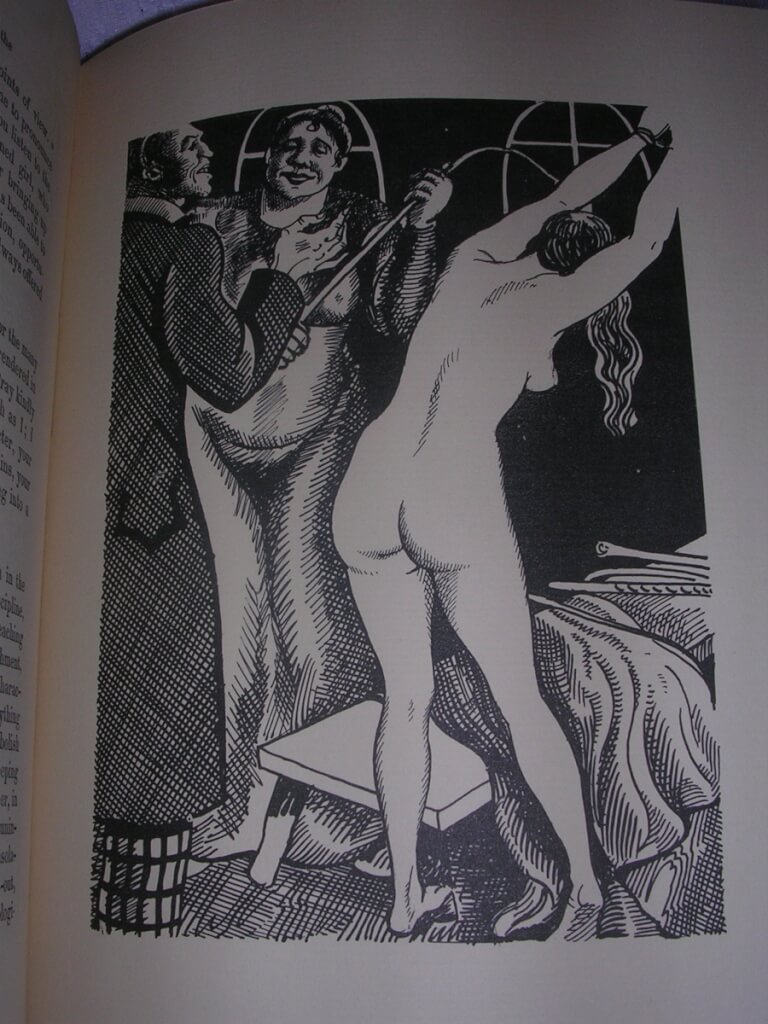 Nell in Bridewell (Lenchen im Zuchthause): Description of the System of Corporal Punishment (Flagellation) in the Female Prisons of South Germany up to the year 1848; a contribution to the history of manners., W. Reinhard, trans. W.C. Costello Ph. D. and A. R. Allinson M. A. (Psych Press [New York], 1932) 9 5/8" X 6 1/2", 326pp, hardbound, black cloth spine over orange cloth boards, gilt lettering and bands on spine, fore and bottom edge deckle, just good condition, soiling and rubbing on front cover, interior clean, some pages unopened, ex libris Joe H. and Bertha M. Shryock Although the title suggests that this is a "study", it goes beyond the facts and delves into the minds of those who are doing the punishing and those who are being humiliated and punished. Publishers of these "flagellation novels" would often lesson their liability by representing their books as academic studies. Often they would go unnoticed by the larger community unaware of the erotic nature of such a book to a certain segment of the public. In this book, Nell describes in graphic terms the merciless floggings she witnessed of girls and young women, as well as of boys and men and confesses to disturbingly confusing emotions that such sights occasioned in her. She recalls the lustful expressions on the faces of the onlookers, records the fervent words of gratitude to the skillful flogger from the lips of grand ladies who "were only too delighted to see such girls whipped", and tells of the evidently sensual appetites such cruelties incited in the torturers. This edition is a facsimile reprint of Carrington's 1900 translation. Added to it are very nice illustrations [woodcuts?] by an unknown artist.
Nell in Bridewell (Lenchen im Zuchthause): Description of the System of Corporal Punishment (Flagellation) in the Female Prisons of South Germany up to the year 1848; a contribution to the history of manners., W. Reinhard, trans. W.C. Costello Ph. D. and A. R. Allinson M. A. (Psych Press [New York], 1932) 9 5/8" X 6 1/2", 326pp, hardbound, black cloth spine over orange cloth boards, gilt lettering and bands on spine, fore and bottom edge deckle, just good condition, soiling and rubbing on front cover, interior clean, some pages unopened, ex libris Joe H. and Bertha M. Shryock Although the title suggests that this is a "study", it goes beyond the facts and delves into the minds of those who are doing the punishing and those who are being humiliated and punished. Publishers of these "flagellation novels" would often lesson their liability by representing their books as academic studies. Often they would go unnoticed by the larger community unaware of the erotic nature of such a book to a certain segment of the public. In this book, Nell describes in graphic terms the merciless floggings she witnessed of girls and young women, as well as of boys and men and confesses to disturbingly confusing emotions that such sights occasioned in her. She recalls the lustful expressions on the faces of the onlookers, records the fervent words of gratitude to the skillful flogger from the lips of grand ladies who "were only too delighted to see such girls whipped", and tells of the evidently sensual appetites such cruelties incited in the torturers. This edition is a facsimile reprint of Carrington's 1900 translation. Added to it are very nice illustrations [woodcuts?] by an unknown artist. -
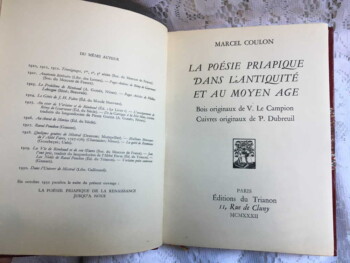
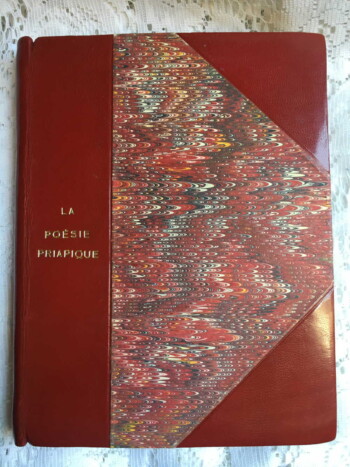 La poésie priapique dans l'antiquité et au moyen age [Priapic poetry in antiquity and the middle ages], ed. Marcel Coulon, 1 original wood engraving by V. Le Campion, 2 original brass engravings by P. Dubreuil (Éditions du Trianon, Paris, 1932, printed by Les Presses de Massoul, #119 of 750) 7.75"x6.25", 166pp+index, 3/4 bound red calf over marbled boards, gilt title on cover and spine, original french wraps bound in, marbled end papers, near fine condition, ribbon intact, pages clean. A history of priapic literature covering folklore, poetry, Priapus, mythology, homosexuality in the ancient world.
La poésie priapique dans l'antiquité et au moyen age [Priapic poetry in antiquity and the middle ages], ed. Marcel Coulon, 1 original wood engraving by V. Le Campion, 2 original brass engravings by P. Dubreuil (Éditions du Trianon, Paris, 1932, printed by Les Presses de Massoul, #119 of 750) 7.75"x6.25", 166pp+index, 3/4 bound red calf over marbled boards, gilt title on cover and spine, original french wraps bound in, marbled end papers, near fine condition, ribbon intact, pages clean. A history of priapic literature covering folklore, poetry, Priapus, mythology, homosexuality in the ancient world. -
 Etude Sur La Bestialite Au Point de Vue Historique, Medical et Juridique, G. Dubois-Desaulle (Charles Carrington, Paris, 1905, #437/500, printed Felix Guy et Cie, Aleçon) 10"x7.25", 2 volumes, xii+443pp, Holland paper , modern binding half-calf over red boards, gilt title and decorations on spine, original paper covers bound inside, fore and bottom edges deckled, some pages uncut, very good condition for age, clean. Study of bestiality from the historical, medical and legal point of view. A very nice copy of a VERY rare book.
Etude Sur La Bestialite Au Point de Vue Historique, Medical et Juridique, G. Dubois-Desaulle (Charles Carrington, Paris, 1905, #437/500, printed Felix Guy et Cie, Aleçon) 10"x7.25", 2 volumes, xii+443pp, Holland paper , modern binding half-calf over red boards, gilt title and decorations on spine, original paper covers bound inside, fore and bottom edges deckled, some pages uncut, very good condition for age, clean. Study of bestiality from the historical, medical and legal point of view. A very nice copy of a VERY rare book. -
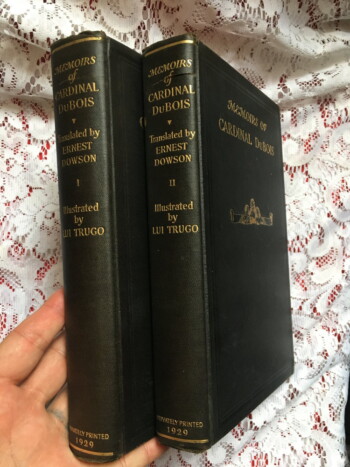
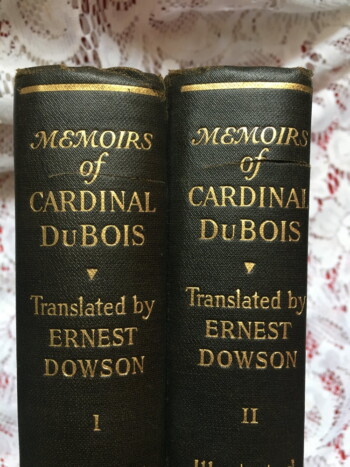 Memoirs of Cardinal Dubois | A complete unabridged translation from the French by Ernest Dowson | Embellished with photogravure portraits of Cardinal Dubois and the Duc d'Orleans, together with twelve full page drawings by Lui Trugo (Privately Printed for Subscribers [Art Studio Press], New York, 1929, #264/1500) 9.75"x6.5", 2 volumes on hand laid paper, xvi-376pp, viii-349pp, black cloth with gilt titles and decorations, top-edge inked, others deckled, good condition bumped corners and a few scuff marks. Two different ex libris Alan K Dolliver bookplates inside front covers of both books. According to the publisher, the original manuscript which was written entirely in Dubois hand was stolen by his secretary Lavergne after his death in 1723. It was later discovered of its literary value that Lavergne attempted to sell the manuscript. He was found and arrested. They later fell into the hands of Comte de Maurepas, then upon his death they were passed on to an anonymous writer named Mercier (possibly M. Paul Laroix) whose family had it published in 1829. The manuscript then became lost. In 1899 and English version of the book translated by Ernest Christopher Dowson, was published by the notorious pornographer, Leonard Smithers & Co. This is, presumably a reprinting of that translation. Guillaume Dubois (1656-1723), a son of a country doctor, rose from humble beginnings to positions of power and high honor in government and in the Catholic Church. He is best known for negotiating the Triple Alliance of 1717 between France, the Dutch Republic and Great Britain against their mutual enemy, Spain. Considered one of the four great French Cardinal-Ministers (Richelieu, Mazarin, Dubois, and Fleury). His ecclesiastical career left a great deal to be desired. Although there is no proof of the prevalent assertion that he got secretly married, his licentiousness, and notorious impiety, even at the time of his death, make it evident that he pursued and used ecclesiastical dignities principally to enhance his political position and prestige. Eventually in 1721, Du Bois was created cardinal. He had the reputation of a libertine and adventurer and made plenty of enemies. One of his rivals was charged at creating his portrait, the Duc de Saint-Simon, who was said to have placed a painting of Dubois in his lavatory. Saint-Simon had this to say about the Cardinal: "He was a little, pitiful, wizened, herring-gutted man, in a flaxen wig, with a weasel's face, brightened by some intellect. All the vices - perfidy, avarice, debauchery, ambition, flattery - fought within him for the mastery. He was so consummate a liar that, when taken in the fact, he could brazenly deny it. Even his wit and knowledge of the world were spoiled, and his affected gaiety was touched with sadness, by the odour of falsehood which escaped through every pore of his body." This famous picture is certainly biased. Dubois was unscrupulous, but so were his contemporaries, and whatever vices he had, he forged a European peace that, with the exception of small, restrained military expeditions against the Austrian Habsburgs, would last for a quarter of a century.
Memoirs of Cardinal Dubois | A complete unabridged translation from the French by Ernest Dowson | Embellished with photogravure portraits of Cardinal Dubois and the Duc d'Orleans, together with twelve full page drawings by Lui Trugo (Privately Printed for Subscribers [Art Studio Press], New York, 1929, #264/1500) 9.75"x6.5", 2 volumes on hand laid paper, xvi-376pp, viii-349pp, black cloth with gilt titles and decorations, top-edge inked, others deckled, good condition bumped corners and a few scuff marks. Two different ex libris Alan K Dolliver bookplates inside front covers of both books. According to the publisher, the original manuscript which was written entirely in Dubois hand was stolen by his secretary Lavergne after his death in 1723. It was later discovered of its literary value that Lavergne attempted to sell the manuscript. He was found and arrested. They later fell into the hands of Comte de Maurepas, then upon his death they were passed on to an anonymous writer named Mercier (possibly M. Paul Laroix) whose family had it published in 1829. The manuscript then became lost. In 1899 and English version of the book translated by Ernest Christopher Dowson, was published by the notorious pornographer, Leonard Smithers & Co. This is, presumably a reprinting of that translation. Guillaume Dubois (1656-1723), a son of a country doctor, rose from humble beginnings to positions of power and high honor in government and in the Catholic Church. He is best known for negotiating the Triple Alliance of 1717 between France, the Dutch Republic and Great Britain against their mutual enemy, Spain. Considered one of the four great French Cardinal-Ministers (Richelieu, Mazarin, Dubois, and Fleury). His ecclesiastical career left a great deal to be desired. Although there is no proof of the prevalent assertion that he got secretly married, his licentiousness, and notorious impiety, even at the time of his death, make it evident that he pursued and used ecclesiastical dignities principally to enhance his political position and prestige. Eventually in 1721, Du Bois was created cardinal. He had the reputation of a libertine and adventurer and made plenty of enemies. One of his rivals was charged at creating his portrait, the Duc de Saint-Simon, who was said to have placed a painting of Dubois in his lavatory. Saint-Simon had this to say about the Cardinal: "He was a little, pitiful, wizened, herring-gutted man, in a flaxen wig, with a weasel's face, brightened by some intellect. All the vices - perfidy, avarice, debauchery, ambition, flattery - fought within him for the mastery. He was so consummate a liar that, when taken in the fact, he could brazenly deny it. Even his wit and knowledge of the world were spoiled, and his affected gaiety was touched with sadness, by the odour of falsehood which escaped through every pore of his body." This famous picture is certainly biased. Dubois was unscrupulous, but so were his contemporaries, and whatever vices he had, he forged a European peace that, with the exception of small, restrained military expeditions against the Austrian Habsburgs, would last for a quarter of a century. -
 Die Abenteuer des Chevalier Faublas | Erzählt von Louvet de Couvray [[The adventures of the Chevalier Faublas | Told by Louvet de Couvray], etchings by Karl Walser (Georg Müller, Munich, 1910, #1411/1500) 8.25"x5.5", 4 volumes, x+216pp, 279pp, 295pp, 344pp, half calf over decorated silk (from a drawing by Karl Walser), black title and vol. label with gilt lettering and decorations on spine, 4 etched title vignettes and 12 toned etchings by Karl Walser on 12 panels with green tissue guard, ribbons present in all volumes, good+ condition. Karl Walser (1877-1943) was a Swiss painter, set designer and illustrator. His artwork, although very popular during his lifetime, has mostly been forgotten by the art world, unlike his brother, author Robert Walser, who was never able to support himself through writing which gained notoriety after his death. Jean-Baptiste Louvet de Couvrai (1760 - 1797) was born in Paris as the son of a stationer, he became a bookseller's clerk, and first attracted attention with the first part of his novel "Les Amours du chevalier de Faublas" (5 parts) in 1787; it was followed in 1788 by "Six semaines de la vie du chevalier de Faublas" (8 parts) and in 1790 by "La Fin des amours du chevalier de Faublas" (6 parts). The heroine, Lodoiska, was modeled on the wife of a jeweler in the Palais Royal, with whom he had an affair. She divorced her husband in 1792 and married Louvet in 1793. This is considered a so-called "libertine" novel. It dwells mainly on the sexual escapades of its hero, a sort of amiable young libertine, and on the corrupted morals of eighteenth-century France. At the start of this novel the young Chevalier de Faublas attends a party dressed as a woman and is knowingly seduced by the lady of the house ('. I receive with equal astonishment and pleasure a charming lesson, which I repeated more than once .') Oxford Comp. to French Literature says it is "typical of many frivolous, licentious novels of its time, and still mentioned. Faublas, the amiable hero, is the victim of his own charms. His amorous adventures, recounted with a certain lively force, begin with his entry into society at the age of sixteen. He loves several women by the way and three in particular. A jealous husband and a despairing suicide reduce the three to one. The novel ends on a moral note: Faublas , who had happened to settle down with his remaining love, is haunted by the avenging phantoms of the other two and goes mad."
Die Abenteuer des Chevalier Faublas | Erzählt von Louvet de Couvray [[The adventures of the Chevalier Faublas | Told by Louvet de Couvray], etchings by Karl Walser (Georg Müller, Munich, 1910, #1411/1500) 8.25"x5.5", 4 volumes, x+216pp, 279pp, 295pp, 344pp, half calf over decorated silk (from a drawing by Karl Walser), black title and vol. label with gilt lettering and decorations on spine, 4 etched title vignettes and 12 toned etchings by Karl Walser on 12 panels with green tissue guard, ribbons present in all volumes, good+ condition. Karl Walser (1877-1943) was a Swiss painter, set designer and illustrator. His artwork, although very popular during his lifetime, has mostly been forgotten by the art world, unlike his brother, author Robert Walser, who was never able to support himself through writing which gained notoriety after his death. Jean-Baptiste Louvet de Couvrai (1760 - 1797) was born in Paris as the son of a stationer, he became a bookseller's clerk, and first attracted attention with the first part of his novel "Les Amours du chevalier de Faublas" (5 parts) in 1787; it was followed in 1788 by "Six semaines de la vie du chevalier de Faublas" (8 parts) and in 1790 by "La Fin des amours du chevalier de Faublas" (6 parts). The heroine, Lodoiska, was modeled on the wife of a jeweler in the Palais Royal, with whom he had an affair. She divorced her husband in 1792 and married Louvet in 1793. This is considered a so-called "libertine" novel. It dwells mainly on the sexual escapades of its hero, a sort of amiable young libertine, and on the corrupted morals of eighteenth-century France. At the start of this novel the young Chevalier de Faublas attends a party dressed as a woman and is knowingly seduced by the lady of the house ('. I receive with equal astonishment and pleasure a charming lesson, which I repeated more than once .') Oxford Comp. to French Literature says it is "typical of many frivolous, licentious novels of its time, and still mentioned. Faublas, the amiable hero, is the victim of his own charms. His amorous adventures, recounted with a certain lively force, begin with his entry into society at the age of sixteen. He loves several women by the way and three in particular. A jealous husband and a despairing suicide reduce the three to one. The novel ends on a moral note: Faublas , who had happened to settle down with his remaining love, is haunted by the avenging phantoms of the other two and goes mad." -
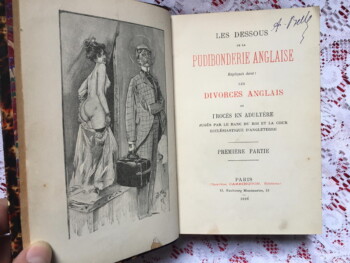
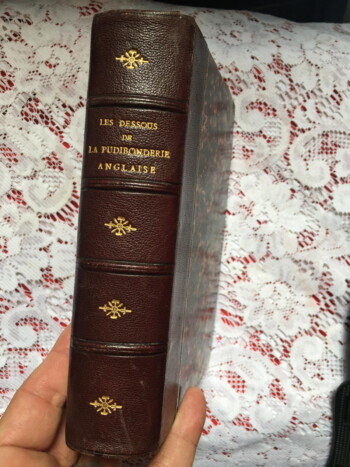 Les dessous de la pudibonderie anglaise expliqués dans les divorces anglais, ou procès en adultère jugés par le banc du Roi et la Cour Ecclésiastique d'Angleterre [trans. The Basics of English Prudishness Explained in English Divorces, or Adultery Trial Judged by the King's Bench and the Ecclesiastical Court of England], anonymous [most like Carrington himself as editor/compiler], illustrations Jacques Wely (Charles Carrington, Paris, 1898, first edition) 7.5"x5", 2 volumes in one, xxiv-108, xxx-287-xii, quarter morocco over marbled boards, 4 raised bands, gilt titles and decoration on spine, marbled endpapers, great condition, previous owners name on title page, some bumping to corners. According to the British Library this is a compilation of entries from "Trials for Adultry" [Trials for Adultery: or, the History of Divorces. Being Select Trials at Doctors Commons, for Adultery, Cruelty, Fornication, Impotence, &c. From the Year 1760, to the present Time. Including the whole of the Evidence on each Cause. Together with The Letters, &c. that have been intercepted between the amorous Parties… Taken in Short-Hand , by a Civilian. London: Printed for S. Bladon, 1779-1780] which, as the full title suggests, is considered one of the Earliest of "The Genre of Pornographic Trial Reports". Also present are excerpts from some English plays. According to Yale, this compillation also "Contains case histories from: Crim. con. biography attributed to Francis Plowden." London, 1798. Criminal conversation, commonly known as crim. con., is a tort arising from adultery, abolished in almost all jurisdictions. (Conversation is an old expression for sexual intercourse that is obsolete except as part of this term.) As far as we can tell, this is a book compiled and edited by Carrington. Carrington himself was an Englishman, a Londoner who was married to a woman from France. He published this book a few years after the couple left London and moved to Paris, presumably so he would have more freedom to publish books that London would have no doubt considered pornography. This book is a case study of the prudishness of the English and it uses salacious material taken from various sources listed above to prove the point.
Les dessous de la pudibonderie anglaise expliqués dans les divorces anglais, ou procès en adultère jugés par le banc du Roi et la Cour Ecclésiastique d'Angleterre [trans. The Basics of English Prudishness Explained in English Divorces, or Adultery Trial Judged by the King's Bench and the Ecclesiastical Court of England], anonymous [most like Carrington himself as editor/compiler], illustrations Jacques Wely (Charles Carrington, Paris, 1898, first edition) 7.5"x5", 2 volumes in one, xxiv-108, xxx-287-xii, quarter morocco over marbled boards, 4 raised bands, gilt titles and decoration on spine, marbled endpapers, great condition, previous owners name on title page, some bumping to corners. According to the British Library this is a compilation of entries from "Trials for Adultry" [Trials for Adultery: or, the History of Divorces. Being Select Trials at Doctors Commons, for Adultery, Cruelty, Fornication, Impotence, &c. From the Year 1760, to the present Time. Including the whole of the Evidence on each Cause. Together with The Letters, &c. that have been intercepted between the amorous Parties… Taken in Short-Hand , by a Civilian. London: Printed for S. Bladon, 1779-1780] which, as the full title suggests, is considered one of the Earliest of "The Genre of Pornographic Trial Reports". Also present are excerpts from some English plays. According to Yale, this compillation also "Contains case histories from: Crim. con. biography attributed to Francis Plowden." London, 1798. Criminal conversation, commonly known as crim. con., is a tort arising from adultery, abolished in almost all jurisdictions. (Conversation is an old expression for sexual intercourse that is obsolete except as part of this term.) As far as we can tell, this is a book compiled and edited by Carrington. Carrington himself was an Englishman, a Londoner who was married to a woman from France. He published this book a few years after the couple left London and moved to Paris, presumably so he would have more freedom to publish books that London would have no doubt considered pornography. This book is a case study of the prudishness of the English and it uses salacious material taken from various sources listed above to prove the point. -
 Memoirs of Fanny Hill, John Cleland (Privately Printed, The Kamashastra Society, 1907 [likely pirated copy of the Paris Kamashastra edition, likely clandestinely printed in the US, c. 1920-30s]) 8.75" X 5.75", 287pp, hardbound no DJ, top edge dyed blue, fair condition, binding good, boards are loose but holding. Written while the author was in debtor's prison in London and first published in 1748, Fanny Hill is considered the first original English prose pornography, and the first pornography to use the form of the novel. One of the most prosecuted and banned books in history, it has become a synonym for obscenity. The title page is printed in black with green decorations. The contents mirror the Carrington versions of the book, reformatted and lacking the plates. The title is in black (not black and green as other Kamashastra editions) This leads me to believe that it is a likely US pirate of the Kamashastra (which is, itself a pirate of the Carrington version).
Memoirs of Fanny Hill, John Cleland (Privately Printed, The Kamashastra Society, 1907 [likely pirated copy of the Paris Kamashastra edition, likely clandestinely printed in the US, c. 1920-30s]) 8.75" X 5.75", 287pp, hardbound no DJ, top edge dyed blue, fair condition, binding good, boards are loose but holding. Written while the author was in debtor's prison in London and first published in 1748, Fanny Hill is considered the first original English prose pornography, and the first pornography to use the form of the novel. One of the most prosecuted and banned books in history, it has become a synonym for obscenity. The title page is printed in black with green decorations. The contents mirror the Carrington versions of the book, reformatted and lacking the plates. The title is in black (not black and green as other Kamashastra editions) This leads me to believe that it is a likely US pirate of the Kamashastra (which is, itself a pirate of the Carrington version). -
Out of stock

 2.25" x 2.75" Shackle Antique hand-forged iron shackles from a farm in Bulgaria. They have been cleaned up and seasoned much like you'd season your cast iron skillet (repeatedly coated with oil and baked). No key is needed as they lock using a puzzle design.
2.25" x 2.75" Shackle Antique hand-forged iron shackles from a farm in Bulgaria. They have been cleaned up and seasoned much like you'd season your cast iron skillet (repeatedly coated with oil and baked). No key is needed as they lock using a puzzle design. -
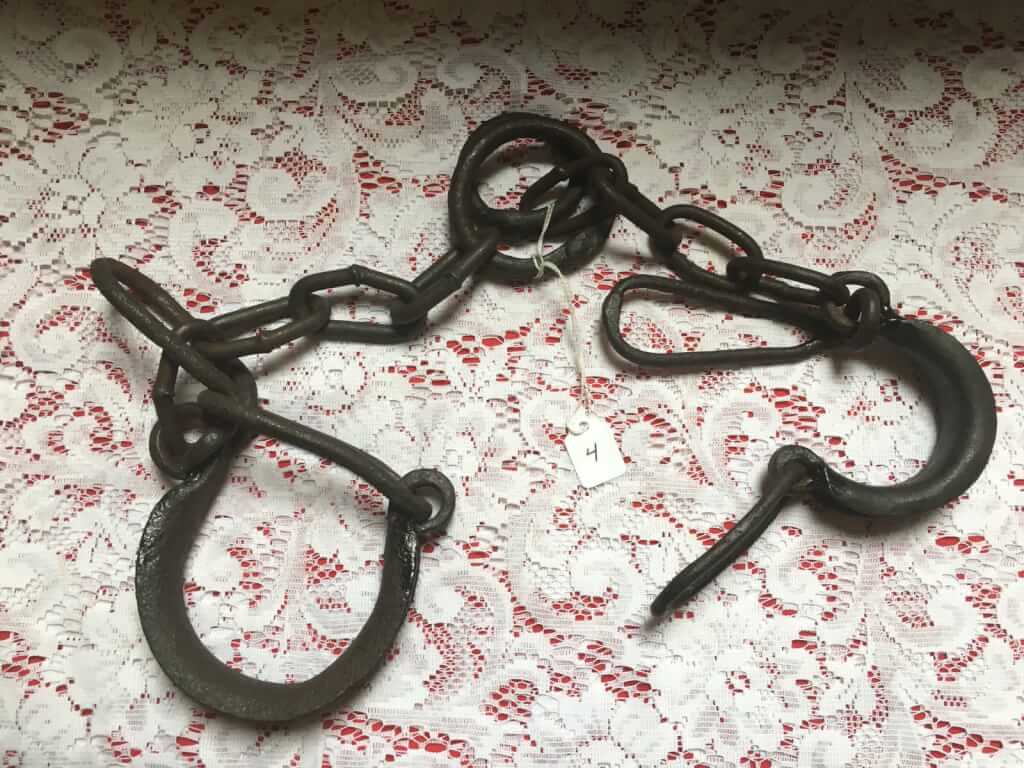
 (2 x 2") + (2 3/4 x 3 1/4") Shackles (matched pair ankle/wrist) Antique hand-forged iron shackles from a farm in Bulgaria. They have been cleaned up and seasoned much like you'd season your cast iron skillet (repeatedly coated with oil and baked). No key is needed as they lock using a puzzle design.
(2 x 2") + (2 3/4 x 3 1/4") Shackles (matched pair ankle/wrist) Antique hand-forged iron shackles from a farm in Bulgaria. They have been cleaned up and seasoned much like you'd season your cast iron skillet (repeatedly coated with oil and baked). No key is needed as they lock using a puzzle design. -

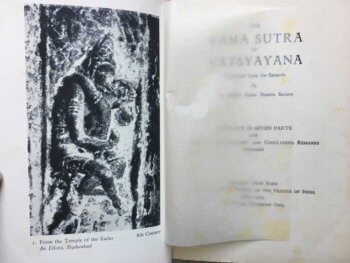 <strong>The Kama Sutra of Vatsyayana | Translated from the Sanscrit by The Hindoo Kama Shastra Society | Complete in seven parts with Preface, Introduction, and Concluding Remarks | Illustrated</strong>, by Vatsyayana (Printed for the Society of the Friends of India 1883-1925, Benares-New York, one of 800, unnumbered) <em>6"x9", xxi+175pp, hardbound, blue boards, hand laid paper, top-edge gilt, others deckled, 8 B/W half-tone reproductions of erotic Hindu stone-sculptures with tissue guards, soiling on boards, inner pages are clean, binding is good.</em> Attributed to ancient Indian philosopher Vatsyayana, the Kama Sutra is generally believed to have been composed between 400 and 200 B.C.E. Although a portion of the work consists of practical advice on sexual intercourse, the work is primarily prose consisting of 1250 verses distributed over 36 chapters structured into seven parts. This book lists those parts as: Part I. Index, and General Consideration of the Subject Part II. Of Sexual Union Part III. About the Acquisition of a Wife Part IV. About a Wife Part V. About the Wives of Other People Part VI. About Courtezans Part VII. On the Means of Attracting Others to Oneself
<strong>The Kama Sutra of Vatsyayana | Translated from the Sanscrit by The Hindoo Kama Shastra Society | Complete in seven parts with Preface, Introduction, and Concluding Remarks | Illustrated</strong>, by Vatsyayana (Printed for the Society of the Friends of India 1883-1925, Benares-New York, one of 800, unnumbered) <em>6"x9", xxi+175pp, hardbound, blue boards, hand laid paper, top-edge gilt, others deckled, 8 B/W half-tone reproductions of erotic Hindu stone-sculptures with tissue guards, soiling on boards, inner pages are clean, binding is good.</em> Attributed to ancient Indian philosopher Vatsyayana, the Kama Sutra is generally believed to have been composed between 400 and 200 B.C.E. Although a portion of the work consists of practical advice on sexual intercourse, the work is primarily prose consisting of 1250 verses distributed over 36 chapters structured into seven parts. This book lists those parts as: Part I. Index, and General Consideration of the Subject Part II. Of Sexual Union Part III. About the Acquisition of a Wife Part IV. About a Wife Part V. About the Wives of Other People Part VI. About Courtezans Part VII. On the Means of Attracting Others to Oneself












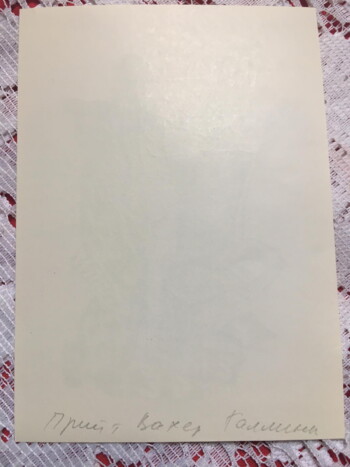
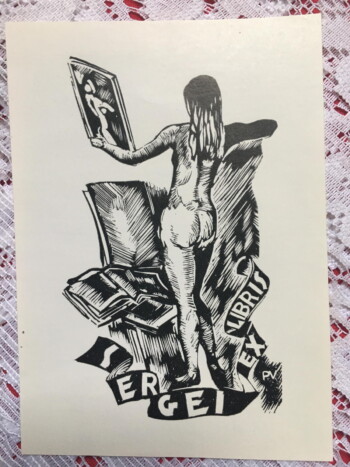
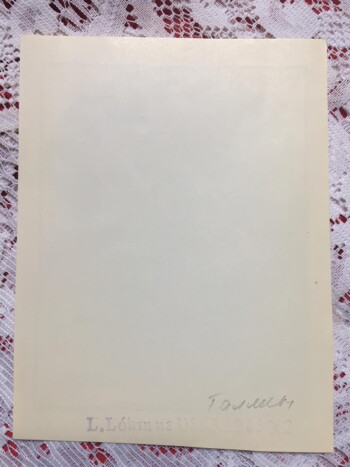
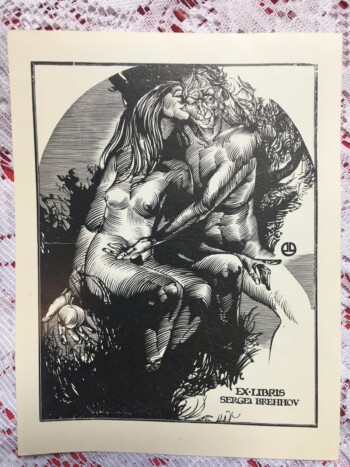
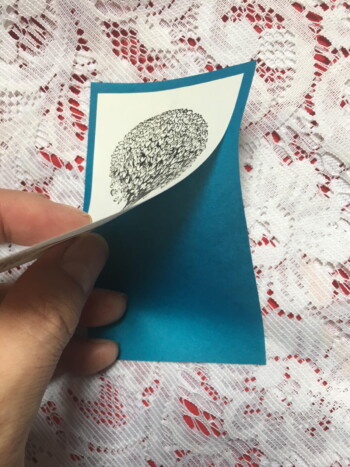
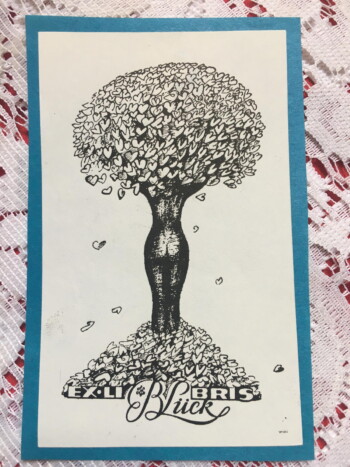
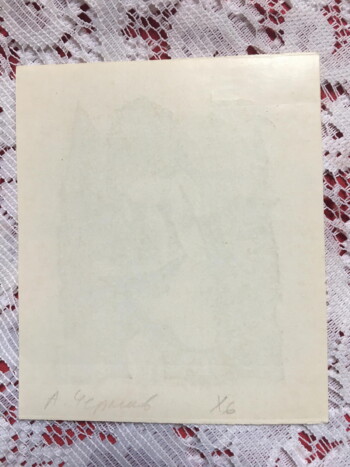
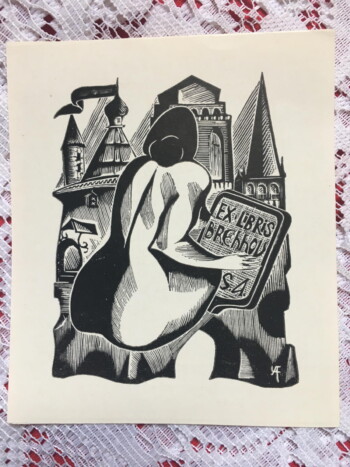
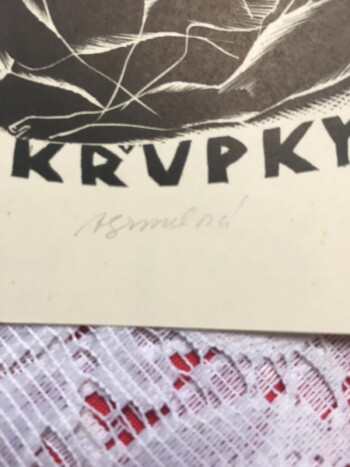
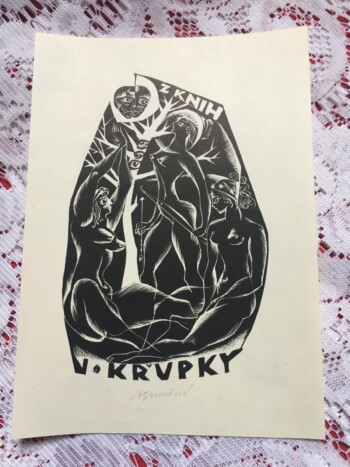
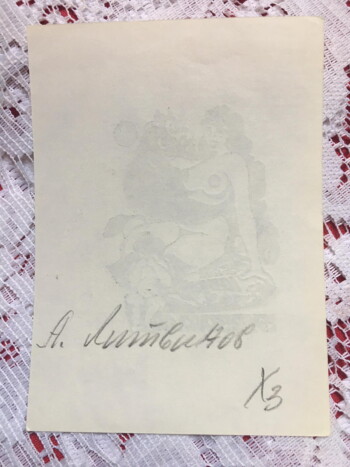
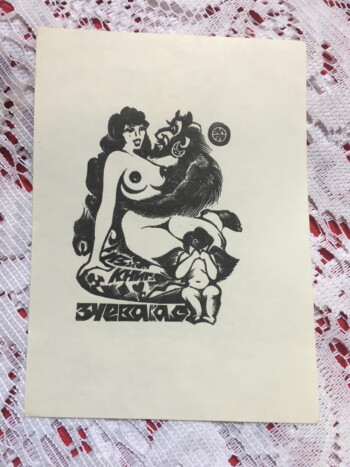
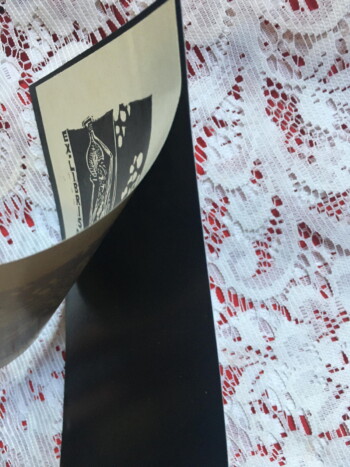
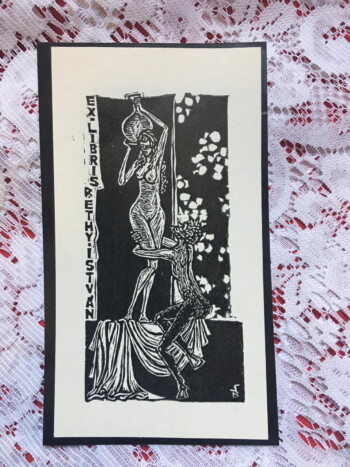
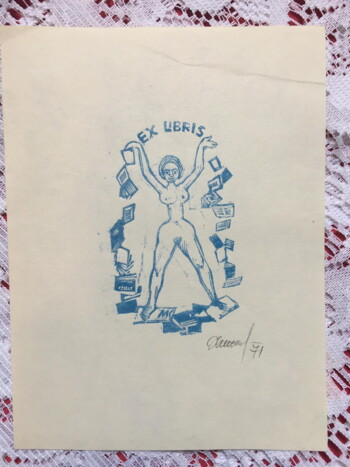

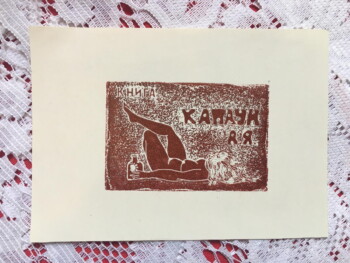








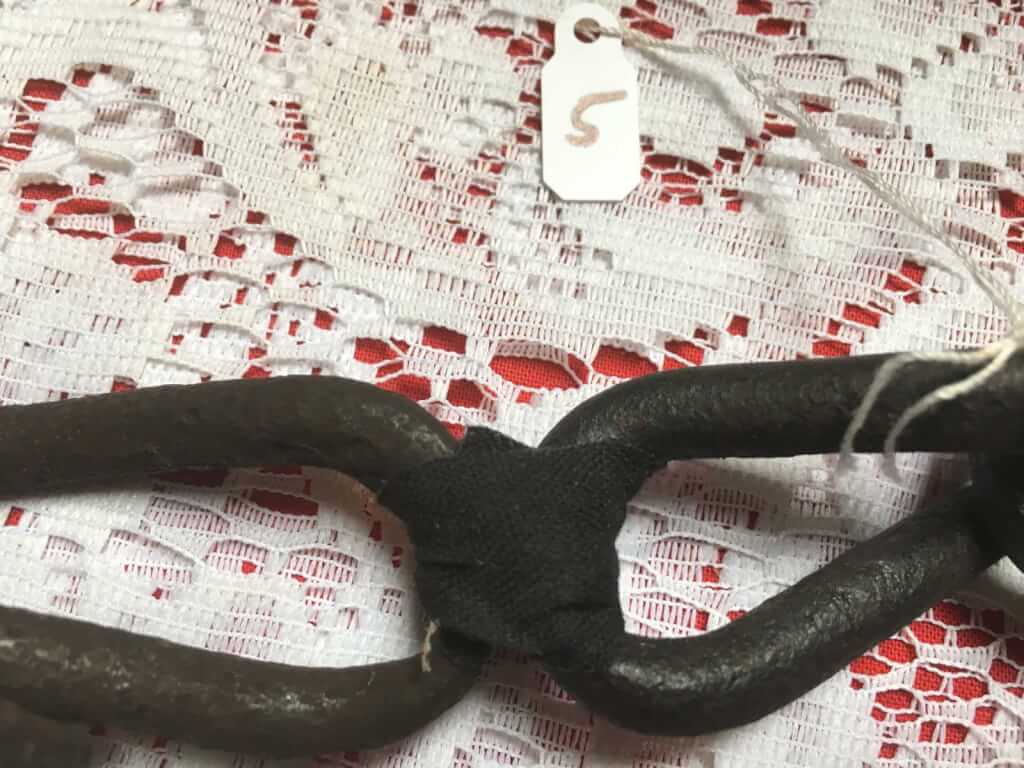
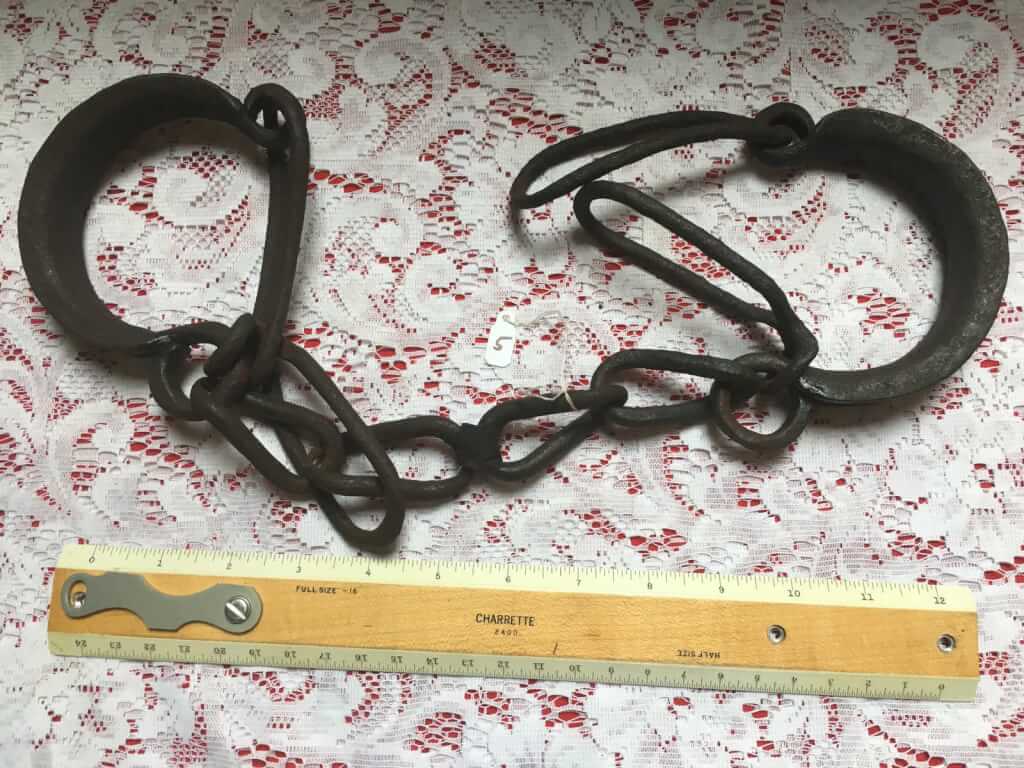



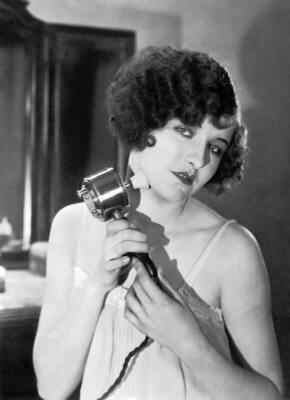 c. 1927 Actress Colleen Moore using a Star-Rite electric massage vibrator in Hollywood.
c. 1927 Actress Colleen Moore using a Star-Rite electric massage vibrator in Hollywood.